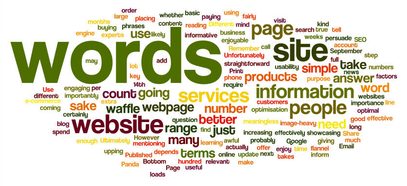
Reading a webpage isn’t like reading a book, magazine, or even a printed brochure. Most people don’t read every single word on a webpage from beginning to end. The tendency is to scan through the text, sometimes in just a few seconds, and judge the page based on the minimal information they’ve absorbed.
That means your customers could be making decisions about your business based on only ten, five or even two per cent of your site content. In other words, if you want people to read, understand and remember important information, you’ve got to make it stand out from the rest of your content.
The first step is to decide what’s important. What do you do that your competitors don’t? What’s your key product or service? How can you make your customers’ lives easier?
Once you’ve decided what you want to highlight, here are a few tips for making it stand out:
- Put the most essential information in the header. It’s bold, it’s large and it’s right at the top of the page, making it the ideal place to showcase your unique selling points.
- Slideshows aren’t just for images. A scrolling slideshow can be used to showcase testimonials from satisfied customers. But keep it simple – fluorescent text and flashing graphics will make your website look like a throwback to the 1990s.
- Make the most of the beginning and end of every paragraph. Studies show that people are more likely to remember the first and last few words than any other bit of a paragraph, so it’s a great place to put the essentials.
- Bullet points. (Like these.) Were your eyes drawn to this list first? Most people’s are, making it the ideal place for important info. Just remember to keep your bullet points short and snappy. (Not like these.)
- Use white space around the text you want to highlight. Your readers’ eyes will be drawn to the white space, and then to the text that’s in it.
And a few things to avoid:
- Too many capitals/exclamation marks, e.g. “CHECK OUT OUR GREAT OFFERS TODAY!!!!!!!!” Readers will recognise this for what it is: a pushy, shouty selling technique.
- Multiple colours. Makes your website look cheap and tacky – which makes your company look cheap and tacky too.
- Too many different fonts. Confuses the reader rather than guiding them to what’s important.





